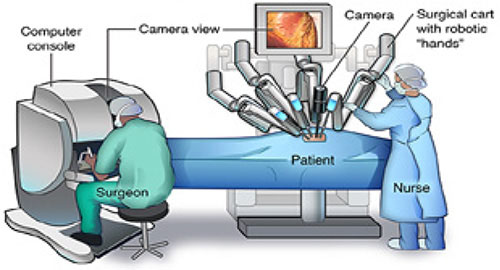LAPAROSCOPY & ROBOTIC SURGERY CLINIC

What is Laparoscopy?
Laparoscopy is the term used when ‘Minimal Access Surgery’ is employed to perform various abdominal surgeries and procedures. The word derives its origin from 2 ancient Greek words, laparos (meaning ‘flank or abdomen’) and scope (meaning ‘to see’). It is also known by various other names like minimally invasive surgery (MIS), keyhole surgery, endosurgery etc.
What is Robotic surgery?

Robotic surgery is the term used for surgery in which a specialised robot is used. A plethora of abdominal and other surgical procedures are performed using robots today. This is the latest advancement in surgery today, and allows the surgeon to perform procedures with more accuracy, efficiency and small cuts.
What are the benefits of laparoscopy over traditional ‘open’ surgery?

Traditionally, during an abdominal operation the surgeon makes a ‘cut’ or an ‘incision’ to approach the diseased part. This means cutting through muscles of the abdominal wall. At the end of the operation, the layers that have been divided are stitched together. The longer the incision more is the pain the patient suffers after the operation and longer is the scar.
Some of the drawbacks of open operations include more blood loss and tissue damage, more postoperative pain, longer hospitalization, slower overall recovery, prolonged time taken to get back to normal activities and work & increased risk of respiratory complications like pneumonia and infection in the wound.
Minimal Access Surgery, using laparoscopy or robotic surgery, gives the following advantages:
- Smaller cuts and scars
- More accurate surgery
- Less blood loss
- Less pain
- Shorter hospital stay
- Faster recovery
